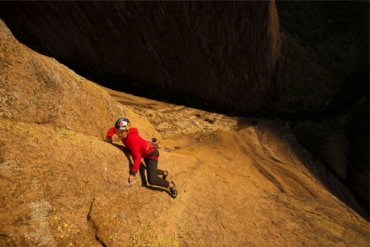By BILL BECHER
Many rock climbers love Aliens. Not creatures from space that burst out of your belly, but the cams made by Colorado Custom Hardware. Technically called spring-loaded camming devices (SLCDs), this category of gear is used to build anchors and protect a climber while on lead, as they cam inside a crack to create a solid anchor point.
As for Aliens, they are among the smallest SLCDs available, and they fit inside old piton scars in Yosemite’s granite or slide perfectly in finger cracks in Joshua Tree’s quartz monzonite stone. But a safety recall and the lack of CE and UIAA test certification have worried some Alien users.

Metolius Master Cams
Metolius Climbing (www.metoliusclimbing.com) has come out with a line of flexible single-stem cams called Master Cams that have a similar design to Aliens but appear a bit beefier. Plus, they carry CE and UIAA certification, which are baseline safety standards climbers have come to expect.
After a season of using Master Cams while climbing at Tahquitz in southern California, Yosemite’s Tuolumne Meadows, Red Rocks in Nevada and other crags, I’m an enthusiastic fan. They seem to fit in tight placements about as well as Aliens and are easy to remove. The proof is in the falling, too: Master Cams held all the lead falls I took onto them this season.
I had one concern: The trigger mechanism uses Kevlar cord instead of cable wire. A retailer I talked to said that a few climbers reported problems with the Kevlar cord pulling out on first-generation Master Cams. Metolius says this problem has been fixed by a slight redesign and some additional manufacturing steps. (The advantage of the Kevlar design, other than a slight weight saving, is that it eliminates the bent-trigger-wire problem common to some cam designs after hard use).

Kevlar cord, instead of cable wire, is employed on the trigger mechanism
The larger Master Cams have the company’s “Range Finder” system, which is a series of colored dots on the side of the cam wings that are supposed to help you determine if the cam is the right size for the placement. But I have found the dots to be hard to see in most real-world placements.
Master Cams come in a range of eight color-coded sizes, from 00 to #6, covering widths from .34” to 1.89”. They weigh from 2.2 oz. to 3.9 oz. — slightly more than the company’s popular Ultralight TCU mini cams. The two smallest size Master Cams are only rated at 5kN strength (1,100 foot-pounds) and should only be used for aid climbing, according to Metolius. The #1 is rated at 8 kN, and the larger sizes at 10kN — acceptable strengths in a lead-fall scenario.
Climbers most likely will favor the smaller sizes, as the single-axle design has less useful range than twin-axle SLCDs like Black Diamond Camalots. The Metolius cams come with sewn Dyneema/nylon slings and have a finger-friendly thumb loop that allows a short clip to get a couple inches of height in aid climbing.
After a season of use, Master Cams now have a permanent place on my rack.
—Based in Southern California, Bill Becher writes on mountain biking, climbing, backcountry skiing, kayaking and scuba diving. He has written on adventure travel, health and fitness for The New York Times, The Los Angeles Times and other publications.






